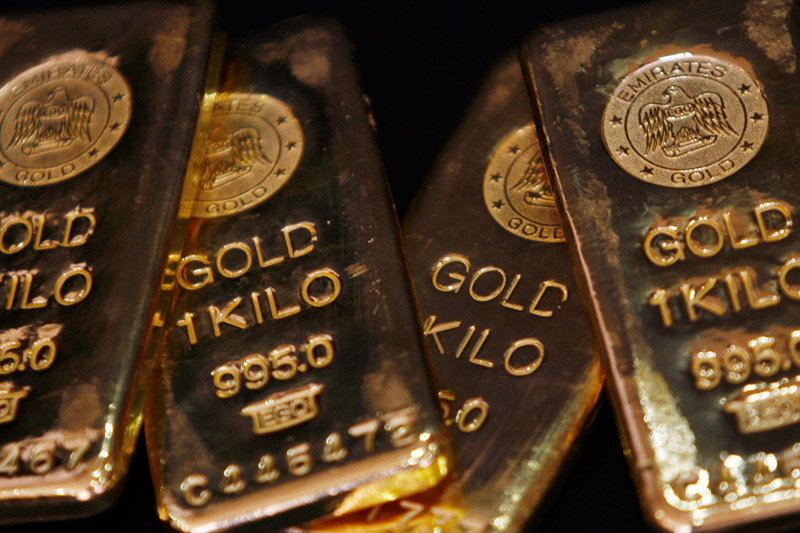Investing.com - Gold prices inched lower on Friday, as sharp gains in global equity markets and a broadly stronger U.S. dollar dampened the appeal of the yellow metal.
Expectations of fresh central bank stimulus in Europe and Japan bolstered sentiment in global financial markets on Friday. Global stocks strengthened after major declines since the start of the year and oil prices rebounded 10%, one of the largest daily rallies ever.
Meanwhile, the dollar index, which measures the greenback’s strength against a trade-weighted basket of six major currencies, rose 0.46% to 99.60 on Friday, just below Thursday’s more than one-month highs of 99.79. The index ended the week with modest gains of 0.64%.
Gold for February delivery on the Comex division of the New York Mercantile Exchange shed $1.90, or 0.17%, to close the week at $1,096.30 a troy ounce.
Despite Friday’s losses, gold prices rose $7.40, or 0.52%, on the week. Prices of the precious metal are almost 4% so far this year as many investors sought refuge from turmoil in global equity markets.
Also on the Comex, silver futures for March delivery dipped 3.7 cents, or 0.26%, on Friday to settle at $14.05 a troy ounce. On the week, silver futures tacked on 13.7 cents, or 1.16%.
Elsewhere in metals trading, copper for March delivery eased up 0.6 cents, or 0.3%, to settle the week at $2.002 a pound on Friday. Copper tumbled to a seven-year low of $1.935 on Monday.
For the week, Comex copper prices jumped 6.1 cents, or 2.99%, amid heavy short covering as equity markets rallied throughout the world on the back of expectations for fresh central bank stimulus.
Despite the strong weekly performance, copper is still down nearly 6% in 2016 as investors slashed holdings of the red metal amid persistent worries over an economic slowdown in China. The Asian nation is the world’s largest copper consumer, accounting for nearly 45% of world consumption.
In the week ahead, investors will be looking to Wednesday’s Federal Reserve policy statement for any indication that the bank is considering slowing the path of interest rate increases this year.
Markets will also be looking to Friday’s data on U.S. fourth quarter gross domestic product, which is expected to show that growth slowed to a modest 0.8% from 2.0% in the third quarter.
Ahead of the coming week, Investing.com has compiled a list of these and other significant events likely to affect the markets.
Monday, January 25
In the euro zone, the Ifo Institute is to report on German business climate.
European Central Bank head Mario Draghi is to speak at an event in Frankfurt.
Tuesday, January 26
The U.S. is to publish a report on consumer confidence.
Wednesday, January 27
The Fed is to announce its benchmark interest rate and publish its rate statement, which outlines economic conditions and the factors affecting the monetary policy decision.
Thursday, January 28
The U.S. is to release data on initial jobless claims, durable goods orders and pending home sales.
Friday, January 29
The Bank of Japan is to announce its benchmark interest rate and publish its rate statement. The announcement is to be followed by a press conference.
The euro zone is to release preliminary data on consumer inflation.
The U.S. is to round up the week with a preliminary estimate of fourth quarter growth, as well as a look at business activity in the Chicago area and revised data on consumer sentiment.
